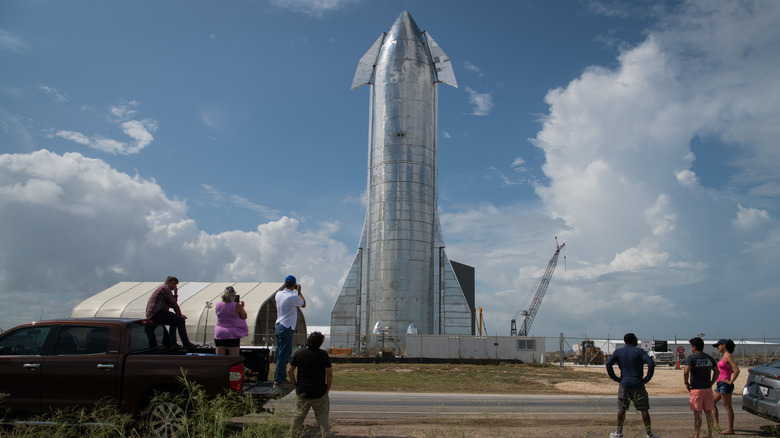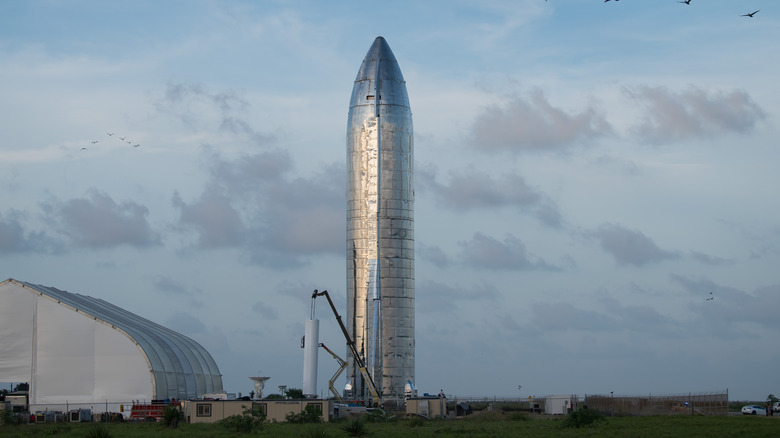How Many Raptor Engines Does SpaceX's Starship Heavy Have & How Powerful Are They?
It's clear that with SpaceX, Elon Musk wants to push the boundaries of space travel, even if every project isn't a success. Despite scrapping 100 Starlink satellites, there are plenty of important missions SpaceX has completed, and the spacecraft manufacturer has been focusing on a new behemoth: Starship.
Starship is the largest rocket ever flown. It measures 397 feet tall, weighs hundreds of thousands of pounds, and is made of stainless steel. Naturally, with all that mass, it's going to take an impressive amount of thrust for the spacecraft to not only take off but generate enough velocity to exit Earth's atmosphere. That's where SpaceX's Raptor engines come into play. In total, the Starship Heavy has 39 Raptor engines, with most of them located on the Super Heavy.
The Super Heavy is the Starship's booster, the first stage of the spacecraft's launch system that eventually separates once it reaches Earth's orbit. The reusable booster features 33 Raptor engines powered by liquid methane (CH4) and liquid oxygen. All are found on the spacecraft's tail end (bottom), with 13 in the center while the remaining 20 encircle them, working together to create behemoth thrust when ignited.
Six Raptor engines power the main Starship craft once the Super Heavy breaks off after the initial launch. Three are traditional Raptor engines, while the other three are Raptor Vacuum engines designed for use in the vacuum of space.
How powerful are SpaceX Raptor engines?
It's hard to imagine the amount of thrust needed to launch a space shuttle into orbit, let alone one as massive as SpaceX's Starship. However, the company's Raptor engines do just the trick, even if they need nearly 40 of them to complete the spacecraft's journey. So, how powerful are they?
Each Raptor engine has a thrust of 230 ton-force (tf) or 507 kip-force (klbf). Considering the Super Heavy has 33 total engines, that means it's outputting 7,590 ton-force to get the Starship (plus the booster) off the ground and into space. For comparison, the GEnx-2B Engine that powers a Boeing 747-8 creates 66,500 lb of thrust compared to the 507,063 pound-force from each Raptor engine.
However, the SpaceX propulsion team didn't stop there. In May 2023, Elon Musk tweeted that the SpaceX engineers achieved even more thrust with the Raptor V3. The newest version of the space rocket achieved 269 tons of thrust, putting the Super Heavy Booster's total thrust at 8,877 tons or 19.5 million pounds.
On the other hand, the Raptor Vacuum engines boast a larger exhaust and expansion nozzle, which increases their efficiency and possesses more thrust than the standard Raptors (especially in space). The engines output 258 tf, giving Starship 774 tons of force (from just three RVacs) after separation in space.

